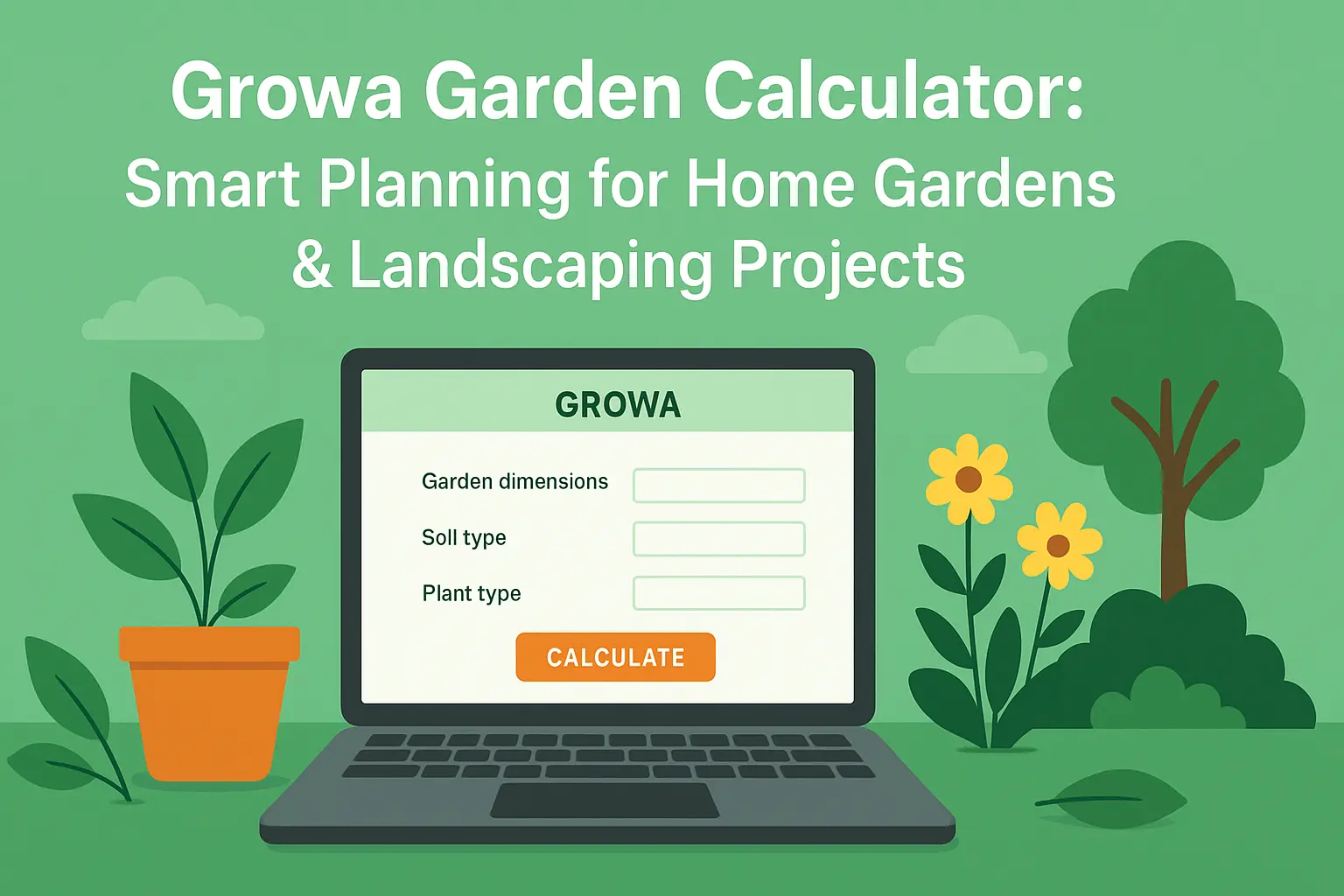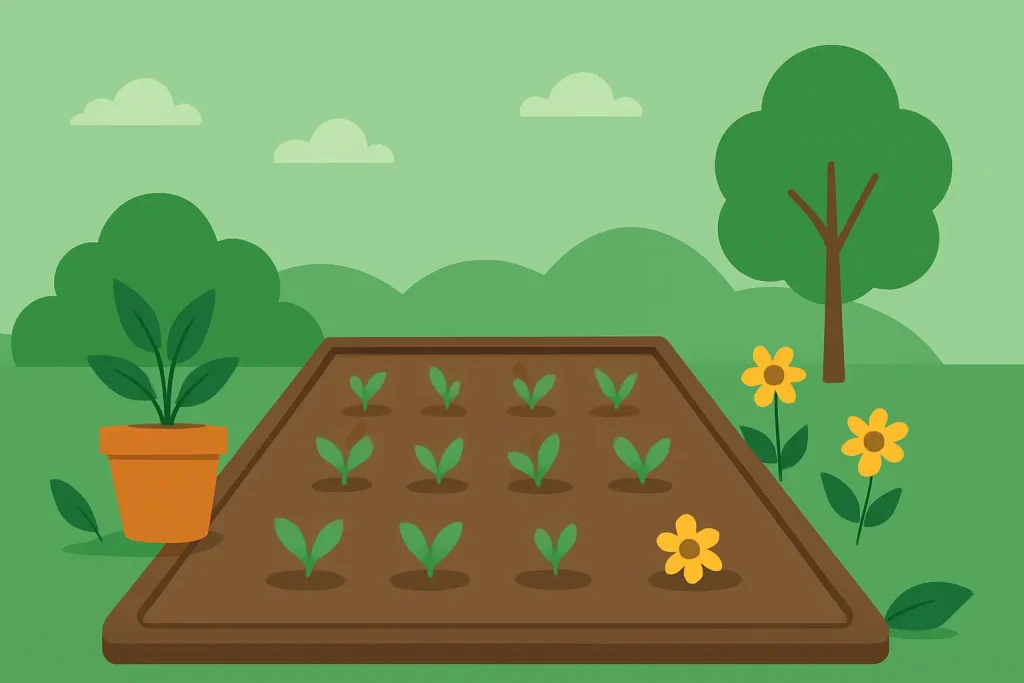Grow a Garden Calculator: Smart Planning for Home Gardens & Landscaping Projects

Gardening is more than planting seeds in the soil—it’s about planning, balance, and making sure every resource is used wisely. Whether you are a home gardener creating a small vegetable patch or a professional landscaper managing a large project, accurate calculations can save time, effort, and money. This is where the Grow a Garden Calculator becomes a game-changer. It brings technology and gardening together, helping people calculate exactly how much soil, fertilizer, plants, or water they need. Instead of guessing, this tool gives you numbers you can trust.
What is the Grow a Garden Calculator?
The Grow a Garden Calculator is a digital tool designed to make garden planning easier and more precise. Traditional gardening often involves estimates—how many bags of soil are enough, how much fertilizer should be applied, or how many seeds will cover a certain area. With this calculator, those uncertainties vanish. You input your garden size, type of plants, and other details, and the tool generates accurate results.
It is designed for both casual gardeners and professionals who handle large landscaping projects. For home gardeners, it simplifies backyard planning. For landscapers, it helps prepare professional proposals and ensures resources are calculated correctly before starting work.
Why Accurate Calculations Matter for Home Gardeners

Home gardeners often struggle with overbuying or underbuying. Buying too much soil not only wastes money but also storage space. Buying too little means multiple trips back to the store. The Grow a Garden Calculator solves this by giving exact numbers, making gardening stress-free.
Another common challenge is fertilizer usage. Too much fertilizer can damage plants and harm soil health, while too little slows down growth. With accurate calculations, gardeners can provide plants with the right amount of nutrients at the right time. This helps maintain soil balance, promotes healthy roots, and encourages steady growth throughout the season.
Watering is another area where precision matters. The calculator can help estimate how much water is needed based on garden size, reducing waste and preventing overwatering. This saves money on water bills and supports eco-friendly gardening.
Precision Planning for Professional Landscapers
Landscaping businesses run on accuracy. Clients expect projects to be completed within budget and on time. Miscalculations in soil, plants, or turf can lead to unexpected costs, project delays, and dissatisfied clients. The Grow a Garden Calculator gives landscapers a reliable way to plan.
For example, when designing a new park or a commercial garden, landscapers can calculate the amount of mulch required for large flowerbeds or the exact square footage of turf. These figures can then be added to proposals, giving clients a clear cost breakdown. By providing transparent numbers, landscapers build trust and increase their chances of winning repeat contracts.
Moreover, accurate resource management reduces waste. Every extra bag of soil or fertilizer that goes unused is money lost. This calculator ensures resources are ordered in just the right amount, improving profit margins.
How the Grow a Garden Calculator Works
Using the calculator is simple. Start by entering your garden’s dimensions—length, width, or total area. Next, select the material or element you want to calculate: soil, compost, mulch, turf, or plants. The tool then processes your input and instantly shows how much you need.
For example, if a gardener has a 10×12 foot bed and wants to fill it with soil at a depth of six inches, the calculator provides the exact volume in cubic feet or cubic yards. This removes the confusion of manual conversions and ensures accurate shopping.
Professional landscapers can use advanced options such as bulk material estimations, multiple area calculations, and seasonal adjustments. This flexibility makes it useful for both small and large-scale projects.
Benefits Over Manual Estimations
Manual calculations can be time-consuming and often lead to mistakes. People may forget unit conversions, miscalculate depth, or overlook soil compaction. The Grow a Garden Calculator eliminates these risks.
The tool saves time because results are instant. It saves money by preventing overbuying or underbuying. It reduces stress by providing gardeners with clear numbers instead of rough guesses. And perhaps most importantly, it contributes to sustainability by cutting down unnecessary resource use.
Real-Life Use Cases
For a home gardener planning a small herb garden, the Grow a Garden Calculator can estimate how many bags of potting soil and how much compost are needed. Instead of trial and error, the gardener can confidently buy exactly what is required.
For a professional landscaper working on a corporate office garden, the calculator can handle multiple beds, different soil depths, and various plant types. Having these calculations in advance allows landscapers to create accurate budgets and timelines, which strengthens client relationships.
Even schools or community groups running gardening projects benefit from the tool, as it helps them stretch limited budgets while teaching students the importance of resource management.
Tips for Getting the Best Results
To make the most of the Grow a Garden Calculator, it helps to prepare accurate information beforehand. Measure your garden carefully, note down the type of plants you’re growing, and decide the depth of soil or mulch required.
Seasonal adjustments should also be considered. For example, spring gardens may need more compost, while summer lawns may require additional water planning. Soil type matters too—sandy soil drains faster and may need more organic matter, while clay soil retains water and may require less.
Keeping records of your previous calculations can also improve accuracy over time. You’ll begin to notice patterns and make smarter decisions for future projects.
The Future of Smart Gardening Tools
Technology is steadily becoming part of gardening. From soil sensors to automated irrigation systems, tools like the Grow a Garden Calculator represent a shift toward smarter, data-driven gardening. For home gardeners, this means less guesswork and more enjoyable results. For professionals, it means efficient projects, happy clients, and sustainable practices.
As more people embrace gardening as both a hobby and a profession, calculators like Growa will play an even bigger role. They combine convenience with accuracy, making them essential for anyone who wants to grow plants successfully while managing resources wisely.
Conclusion
The Grow a Garden Calculator is more than just a tool—it’s a companion for gardeners and landscapers who value accuracy, efficiency, and sustainability. Home gardeners can avoid waste and save money, while professionals can deliver precise, reliable results to their clients. In both cases, the calculator transforms gardening from guesswork into a well-planned process.
By adopting this smart tool, you not only make gardening easier but also support better use of natural resources. Whether you’re planting a few herbs in your backyard or managing a large landscaping project, the Grow a Garden Calculator ensures every inch of soil and every drop of water counts.
